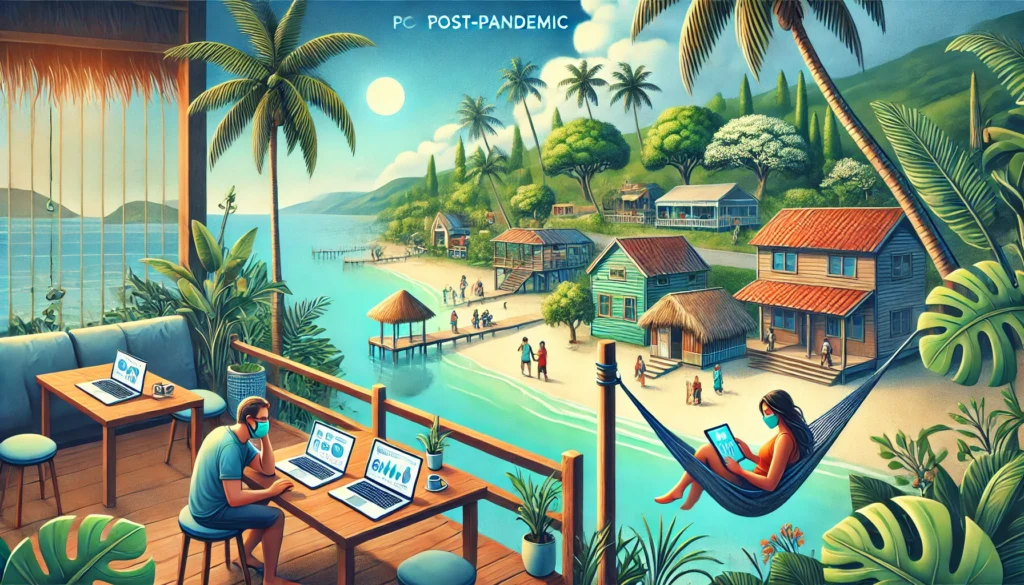
The COVID-19 pandemic redefined the way we live, work, and travel. While the travel industry faced unprecedented challenges during the crisis, it has since emerged with new trends that reflect the evolving preferences and priorities of global travelers. Two such trends, workations and slow travel, are reshaping the way we explore the world.
Workations: Blending Work and Leisure
The rise of remote work during the pandemic has blurred the boundaries between professional and personal life. This shift has led to the emergence of workations—a fusion of work and vacation. Workations allow professionals to escape their usual environments and work from picturesque destinations, combining productivity with relaxation.
Destinations with strong internet connectivity and co-working spaces have become popular among workation enthusiasts. Countries like Portugal, Thailand, and Indonesia have introduced digital nomad visas, making it easier for remote workers to live and work there temporarily. Closer to home, India’s hill stations like Manali and Ooty, and beach towns like Goa, have adapted to this trend by offering co-working cafes, affordable long-term accommodations, and high-speed internet.
Workations provide more than just a change of scenery. They also boost creativity, reduce burnout, and allow individuals to explore new cultures during their downtime. For many, it’s a way to strike a balance between work responsibilities and the desire to travel.
Slow Travel: Prioritizing Depth Over Speed
In stark contrast to the pre-pandemic trend of whirlwind trips, slow travel focuses on meaningful and immersive experiences. Instead of rushing through a checklist of tourist spots, slow travelers prefer to spend extended periods in a single location, forming deeper connections with the local culture, community, and environment.
The pandemic underscored the importance of mindful living, and this sentiment has carried over into travel. Slow travel emphasizes sustainability and supports local businesses. Travelers often stay in homestays, dine at small local eateries, and participate in community-driven activities. For instance, in India, initiatives like village tourism in Meghalaya and farm stays in Kerala offer authentic experiences that align with the principles of slow travel.
This trend also has environmental benefits. By traveling less frequently and staying longer in one destination, travelers can reduce their carbon footprints. Additionally, slow travel provides opportunities for personal growth, as it allows for reflection and a deeper understanding of the places visited.
The Future of Travel: A Hybrid Approach
As the world continues to recover from the pandemic, workations and slow travel are not just trends but reflections of broader shifts in traveler behavior. People are now prioritizing experiences that enrich their lives, whether by finding inspiration while working from a beachside café or by spending weeks immersing themselves in the culture of a small town.
Travel providers and destinations are adapting to these changes. Hotels and resorts are offering long-stay packages, while tour operators are focusing on curated experiences that cater to the slow traveler’s mindset. Technology, too, is playing a pivotal role by facilitating remote work and making it easier for travelers to plan extended stays.
In conclusion, the post-pandemic travel landscape is marked by a desire for flexibility, sustainability, and meaningful experiences. Workations and slow travel exemplify how travelers are seeking to make the most of their journeys, not just as tourists but as global citizens. Whether you’re a remote worker looking for your next office with a view or a traveler longing for a deeper connection with the world, these trends offer exciting possibilities for the future of exploration.



